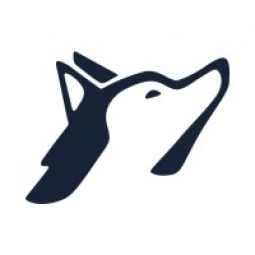公司规模
Large Corporate
地区
- America
国家
- United States
产品
- Balto's Real Time Technology
技术栈
- AI
实施规模
- Enterprise-wide Deployment
影响指标
- Productivity Improvements
- Customer Satisfaction
技术
- 分析与建模 - 实时分析
适用功能
- 销售与市场营销
用例
- 语音识别
服务
- 数据科学服务
关于客户
The customer is a large insurance firm that handles thousands of calls. They were looking for a solution to improve their conversion rates, rep ratings, and average handle time. The firm has a large team of reps who handle these calls and they needed a tool that could provide them with real-time insights and critical information during their calls. The firm also wanted a solution that could provide management with insight into every conversation.
挑战
The large insurance firm was facing challenges in improving their conversion rates, rep ratings, and average handle time. They were looking for a solution that could provide real-time insights and critical information to their reps during calls, while also giving management insight into every conversation.
解决方案
The firm implemented Balto's Real Time Technology, an AI-powered tool that analyzes speech on both sides of the call to instantly deliver critical information to reps. This tool also provides management with insight into every conversation. The firm conducted a 14-week A/B test with their reps to measure the difference in performance between Balto users and Non-Balto users.
运营影响
数量效益

Case Study missing?
Start adding your own!
Register with your work email and create a new case study profile for your business.
相关案例.

Case Study
Vodafone Hungary's Transformation in Order Management with TCS HOBS
Vodafone Hungary, after acquiring UPC Hungary, was faced with the challenge of transforming, rationalizing, and consolidating its complex IT and operational support system (OSS) landscape. The company needed a middleware solution that could manage its nearly one million subscribers and cater to fixed voice services as well as cable and gigabit passive optical networks (GPON) network based broadband services. Other transformation goals included bulk order management, legacy service migration, maintenance of service and resource inventory, and fixed IP address management. The challenge was to simplify the order orchestration process and streamline the operations.
Case Study
Digicel's Digital Transformation: Exceeding CX Goals with Ada's AI
Digicel, a leading mobile network and home entertainment provider in the Caribbean, Latin America, and South Pacific regions, was facing a significant challenge in maintaining a positive customer experience as they scaled. The company was dealing with 800,000 live chat interactions and approximately 5.5 million phone interactions per year, with 90% of brand interactions happening via voice. This model was not sustainable for their efficiency goals, especially as digital interactions became more commonplace in their customers' lives. Digicel had disparate regional call centres with different skill sets, making it difficult to provide a consistent customer experience. The company needed a solution that would not only be easy to adopt internally but also by the customers, supporting the 5 local languages and the nuanced local requirements of the 30+ regional markets they were serving.
Case Study
Brainly: Revolutionizing Education with Vision AI
Brainly, a Kraków-based technology company, provides an online learning platform where students can ask questions and get answers instantly. The platform is used by over 350 million students and parents across 35 countries. However, Brainly faced a challenge in making its platform more accessible and user-friendly for mobile users. Traditional typed queries on smartphones were cumbersome and less efficient. Furthermore, Brainly needed to ensure that its solutions were multilingual, given its global user base. The company also faced the challenge of maintaining stable service during peak usage times, especially during the COVID-19 pandemic when the platform gained tens of millions of new users.
Case Study
Business-VR: A Mobile Virtual B2B Multi-User Platform by MindArk
MindArk's client required a unique platform that would allow professionals to host meetings in Virtual Reality (VR) instead of using traditional telephone or video conference. The platform needed to support multiple users, up to 100, from different locations, and provide a realistic representation of the users through customizable avatars. The platform also needed to support different VR devices including Oculus, HTC Vive, Google Daydream, Samsung Gear VR, and traditional devices like iOS, Android, Windows, and OS X. Additionally, the platform needed to integrate with Google Account and Google Drive to operate with materials stored on the Drive such as PPT, Video, etc. The challenge also included creating a 3D positional / Voice proximity so users could see and hear surrounding objects/users as realistically as possible, and tracking the user’s hands and speech and synchronize it with the avatar’s lips and body language.
Case Study
Ada's AI Solution Empowers Moka's Strategic Growth
Moka, a direct-to-consumer FinTech company, was experiencing rapid growth since its launch in 2017. The Moka app had been downloaded over 1 million times and had thousands of 5-star reviews. However, with this growth came the challenge of scaling its customer support. Moka was already using some support functionalities within their CRM ecosystem, but these did not offer robust features that could provide excellent customer experience at scale. The company faced a high volume of messages during billing periods and general inquiries that consumed valuable support staff bandwidth. Moka’s Head of Customer Success, Cloe Tetreault-Tremblay, was faced with the decision of either scaling the support team at the same pace as their user base or automating some part of their customer experience to free up valuable work hours for support agents.
Case Study
Leveraging Fireflies to Minimize Client Calls and Enhance Efficiency at Clara
Clara, a legal command center for startup founders, was facing a significant challenge in managing client calls. The team found it difficult to share the details of a client call with everyone involved, leading to a time-consuming process where clients had to explain their problems to different team members. Additionally, taking detailed notes during a call was proving to be a hurdle. The act of writing everything down disrupted the natural flow of conversation and reduced meeting engagement, risking the loss of customer interest. Furthermore, the transcription software they were using did not integrate well with their CRM and video conferencing solutions, limiting their efficiency and workflow.







